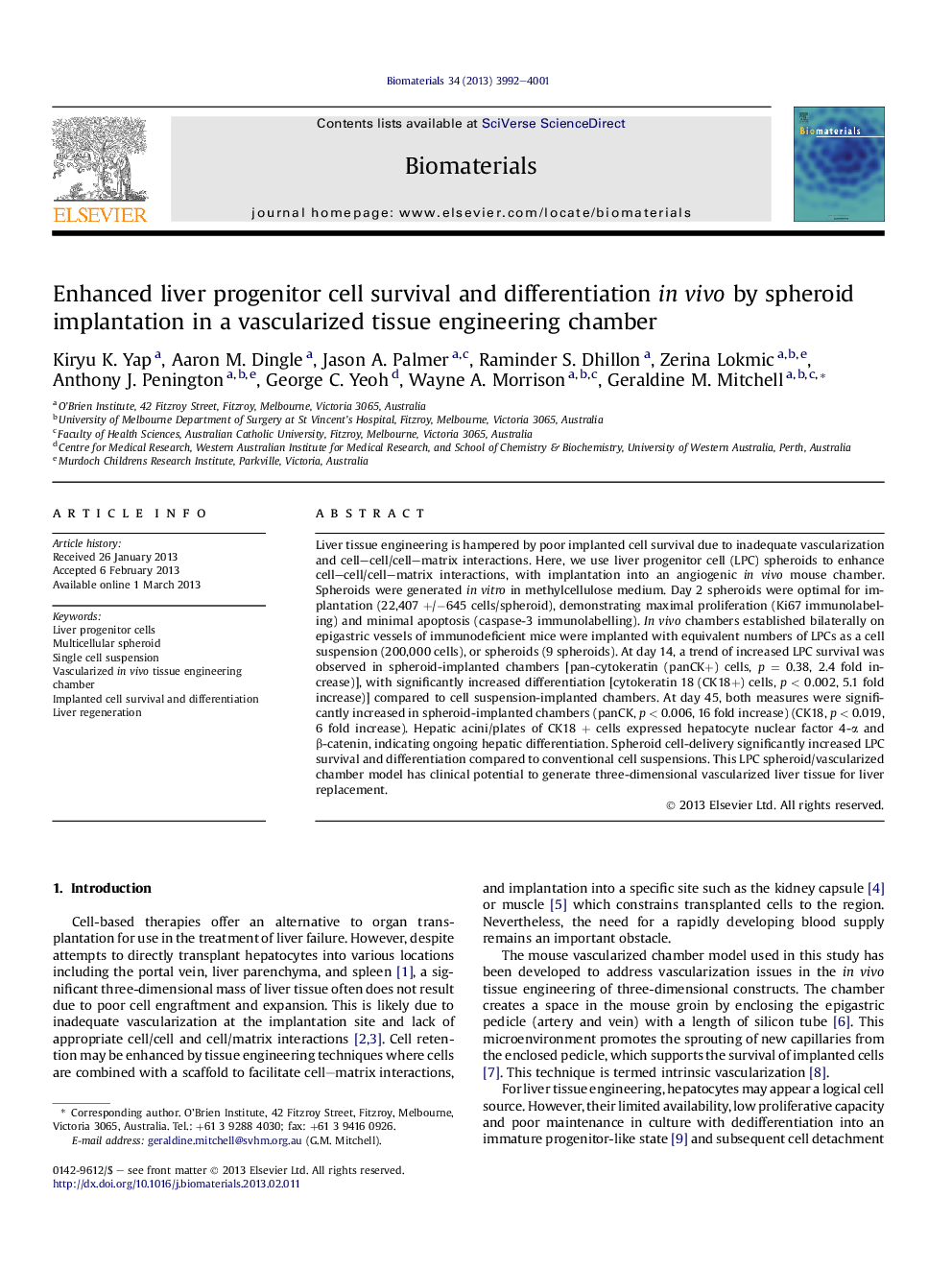| Article ID | Journal | Published Year | Pages | File Type |
|---|---|---|---|---|
| 6151 | Biomaterials | 2013 | 10 Pages |
Liver tissue engineering is hampered by poor implanted cell survival due to inadequate vascularization and cell–cell/cell–matrix interactions. Here, we use liver progenitor cell (LPC) spheroids to enhance cell–cell/cell–matrix interactions, with implantation into an angiogenic in vivo mouse chamber. Spheroids were generated in vitro in methylcellulose medium. Day 2 spheroids were optimal for implantation (22,407 +/−645 cells/spheroid), demonstrating maximal proliferation (Ki67 immunolabeling) and minimal apoptosis (caspase-3 immunolabelling). In vivo chambers established bilaterally on epigastric vessels of immunodeficient mice were implanted with equivalent numbers of LPCs as a cell suspension (200,000 cells), or spheroids (9 spheroids). At day 14, a trend of increased LPC survival was observed in spheroid-implanted chambers [pan-cytokeratin (panCK+) cells, p = 0.38, 2.4 fold increase)], with significantly increased differentiation [cytokeratin 18 (CK18+) cells, p < 0.002, 5.1 fold increase)] compared to cell suspension-implanted chambers. At day 45, both measures were significantly increased in spheroid-implanted chambers (panCK, p < 0.006, 16 fold increase) (CK18, p < 0.019, 6 fold increase). Hepatic acini/plates of CK18 + cells expressed hepatocyte nuclear factor 4-α and β-catenin, indicating ongoing hepatic differentiation. Spheroid cell-delivery significantly increased LPC survival and differentiation compared to conventional cell suspensions. This LPC spheroid/vascularized chamber model has clinical potential to generate three-dimensional vascularized liver tissue for liver replacement.
